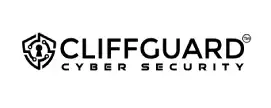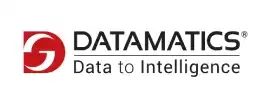Implementation, Consulting, Auditing & Certification at one place . We focus on taking your business to new heights.
ISO 27001 certification in Australia refers to the process of an organization obtaining a formal certification or recognition that it has implemented and maintains an Information Security Management System (ISMS) in accordance with the requirements outlined in the ISO 27001 standard.
ISO 27001:2022 is an internationally recognized standard published by the International Organization for Standardization (ISO) that provides a framework for establishing, implementing, operating, monitoring, reviewing, maintaining, and continually improving an organization’s ISMS in Australia. It sets out a systematic and risk-based approach to managing sensitive information and ensuring its confidentiality, integrity, and availability.
When an organization achieves ISO 27001 certification in Australia, it means that an independent certification body has conducted an audit and verified that the organization’s ISMS complies with the requirements of the ISO/IEC 27001:2022 standard. The certification demonstrates that the organization has implemented best practices in information security and is committed to protecting its sensitive information and managing security risks effectively.
To obtain ISO 27001 certification in Australia, you need to follow a series of steps. Here’s a general outline of the process:
Remember, the specific details and requirements may vary based on your organization and the certification body you choose. It is advisable to consult with an experienced ISO 27001 consultant in Australia or seek guidance from the certification body to navigate the certification process smoothly.
ISO/IEC 27001 certification in Australia is a voluntary certification that organizations can pursue to demonstrate their commitment to information security and to gain a competitive advantage in the marketplace.
However, certain industries or sectors may have specific regulations or contractual requirements that mandate or encourage ISO 27001 certification. For example, in some cases, government contracts or partnerships with large organizations may require suppliers or service providers to have ISO 27001 certification in Australia as a prerequisite.
Additionally, ISO 27001:2022 certification in Australia can be seen as a way to meet legal and regulatory obligations related to information security in various jurisdictions. It helps organizations align their practices with internationally recognized standards and best practices.
Even though ISO 27001:2013 certification in Australia choose to pursue it to enhance their security posture, protect sensitive information, meet customer expectations, and demonstrate their commitment to information security. It provides a structured framework for managing information security risks and can contribute to building trust and credibility with stakeholders.
The ISO 27001 standard has undergone several revisions since its initial publication. The available versions of ISO 27001 are as follows:
It’s important to note that ISO 27001 certifications can be obtained under any of these versions. However, organizations are encouraged to adhere to the most recent version (ISO/IEC 27001:2022) to ensure they are utilizing the latest best practices in information security management.
ISO 27001 certification in Australia requires organizations to fulfill several key requirements. These requirements are outlined in the standard and form the basis for establishing and maintaining an effective Information Security Management System in Australia. Here are the main requirements for ISO 27001:2022 certification in Australia:
These requirements provide a foundation for organizations to establish a robust information security management system and demonstrate compliance with ISO 27001. It’s important to note that the specific implementation of these ISO 27001 Certification requirements may vary depending on the organization’s size, complexity, and industry sector.
Implementing ISO 27001 Certification in Australia involves a series of steps to establish and maintain an effective Information Security Management System (ISMS). Here’s a general overview of the implementation process:
It’s important to note that the implementation process may vary depending on factors such as the size of the organization, complexity of operations, and existing information security practices. Seeking the assistance of a qualified ISO 27001 consultant in Australia or expert can greatly facilitate the implementation process and ensure compliance with the standard.
Implementing ISO 27001 brings several benefits and outcomes for organizations. Here are some of the achievements that can be realized by implementing ISO 27001 in Australia.
Overall, implementing ISO 27001 contributes to a stronger information security posture, improved business resilience, and enhanced trust among stakeholders. It provides a structured framework for managing information security risks and demonstrates an organization’s commitment to protecting sensitive information.
ISO 27001 certification in Australia is applicable to any organization, regardless of its size, sector, or location. It is not limited to specific industries or types of companies. Any organization that handles sensitive information, including customer data, intellectual property, financial data, or other valuable information, can pursue ISO 27001 certification in Australia.
Companies of all sizes, from small businesses to large corporations, across various industries such as manufacturing, IT services, finance, healthcare, e-commerce, telecommunications, and information, including defense, law enforcement, healthcare, and public administration.
Non-profit organizations: donor information, personal data, or other confidential information. Service Providers: IT services, cloud services, managed security services, data centers, software development.
Healthcare Providers: Hospitals, clinics, medical centers, and healthcare organizations that handle patient information and electronic health records (EHR).
Financial Institutions: Banks, insurance companies, investment firms, and other financial organizations that handle sensitive financial data and customer information.
Educational Institutions: Universities, colleges, and schools that handle student records, research data, or other sensitive information.
Third-Party Suppliers: Organizations that provide services or products to other companies, especially if their services involve handling sensitive information on behalf of their clients.
It’s important to note that the decision to pursue ISO 27001 certification is voluntary, and organizations should assess their specific needs, risks, and regulatory requirements to determine if certification is appropriate for them.
An ISO 27001 audit is an assessment process conducted to evaluate an organization’s compliance with the ISO/IEC 27001 standard. The purpose of the audit is to determine whether the organization has effectively implemented an Information Security Management System (ISMS) and meets the requirements specified in ISO 27001 Certification in Australia.
The ISO 27001 audit can be conducted by an accredited certification body or by internal auditors within the organization.
The ISO 27001 audit process typically involves the following steps:
It’s important to note that the specific details of the audit process may vary depending on the certification body and the circumstances of your organization. The certification body will provide you with detailed guidance and instructions on how to prepare for and undergo the ISO 27001 audit in Australia.
By implementing ISO 27001 certification offers several benefits to organizations. Here are some key advantages.
The cost of ISO 27001 certification in Australia can vary depending on several factors, including the size and complexity of the organization, the scope of the certification, Certification Body Fees, Consultancy Fees, Internal Resource Costs, Training Costs, Documentation and Tools and Recertification Costs. If you are still looking ISO 27001 Certification cost in Australia reach out us we will help you your requirements.
ISO 27001 certification in Australia can be issued by accredited certification bodies. These certification bodies are independent organizations that have been authorized and accredited by accreditation bodies to conduct ISO 27001 certification audits and issue certificates.
Accreditation bodies are responsible for assessing the competence and impartiality of certification bodies. They ensure that the certification bodies follow international standards and guidelines for certification processes. Accreditation bodies are typically appointed or recognized by national or regional accreditation bodies, such as ANSI-ASQ National Accreditation Board (ANAB), UK Accreditation Service (UKAS), or National Accreditation Board for Certification Bodies (NABCB) in Australia.
When selecting a certification body to issue ISO 27001 certification, it is important to choose an accredited certification body. This ensures that the certification is recognized and respected internationally. Accredited certification bodies adhere to specific requirements and guidelines, ensuring that the certification process is fair, rigorous, and unbiased.
Yes, ISO 27001 covers various aspects of cybersecurity within its framework for information security management. While ISO 27001 is not solely focused on cybersecurity, it provides a comprehensive approach to managing information security risks, which includes addressing cyber threats.
The standard emphasizes the identification, assessment, and management of information security risks, including those related to cyber attacks, unauthorized access, data breaches, and other cybersecurity incidents. It promotes the implementation of controls and measures to protect information assets and ensure the confidentiality, integrity, and availability of information.
ISO 27001 provides a systematic framework for organizations to establish and maintain an Information Security Management System (ISMS). This includes conducting risk assessments, defining security objectives, implementing controls, and continuously monitoring and improving the ISMS to address emerging cybersecurity risks.
The time it takes to obtain ISO 27001 certification in Australia can vary depending on several factors, including the size and complexity of the organization, the readiness of the Information Security Management System (ISMS), and the resources dedicated to the certification process. Generally, the timeline for ISO 27001 certification can range from a few months to over a year.
To renew ISO 27001 certification in Australia, organizations need to undergo a recertification process before the expiration of their current certification. The recertification process is similar to the initial certification process but may be more streamlined since the organization already has an established Information Security Management System (ISMS) in place. Here are the general steps to renew ISO 27001 certification in Australia:
ISO 27001:2013 and ISO 27001:2022 are different versions of the ISO 27001 standard, each with its own set of requirements and updates. Here are the key differences between ISO 27001:2013 and ISO 27001:2022:
It’s important to note that organizations currently certified to ISO 27001:2013 will need to transition to ISO 27001:2022 before the end of the transition period set by their certification body. The transition period typically ranges from one to three years, depending on the certification body. During the transition, organizations will need to assess and update their ISMS to comply with the requirements of ISO 27001:2022 Certification in Australia and undergo a recertification audit.
ISO 27001 internal auditing training is designed to provide individuals with the knowledge and skills needed to conduct internal audits of an organization’s information security management system (ISMS) based on the ISO 27001 standard. The training is typically aimed at individuals who are responsible for managing or implementing an organization’s ISMS, or those who are responsible for conducting internal audits of the ISMS in Australia.
Awareness training is designed to provide employees with a general understanding of the requirements of the ISO 27001 standard, the importance of information security, and their role in ensuring the security of the organization’s information assets. Awareness training typically covers topics such as information security policies, data classification, access control, incident management, and the use of technology. We do provide ISO 27001 Lead implementer training, ISO 27001 Lead Implementer certification, ISO 27001 Lead Auditor training, ISO 27001 Lead auditor certification services to individual employees.
ISO 27001 and ISO 27002 are both standards related to information security management, but they have different scopes and focus areas. Here are the key differences between ISO 27001 and ISO 27002:
ISO 27001: ISO 27001 is the international standard that outlines the requirements for establishing, implementing, maintaining, and continually improving an Information Security Management System (ISMS). It provides a systematic and risk-based approach to managing information security within an organization. ISO 27001 specifies the management framework and requirements for organizations seeking to achieve ISO 27001 certification. It focuses on the process of establishing and maintaining an effective ISMS and does not provide detailed guidance on specific security controls.
ISO 27002: ISO 27002, formerly known as ISO 17799, is a code of practice for information security controls. It provides a comprehensive set of guidelines and best practices for implementing security controls within the framework of an ISMS. ISO 27002 covers a wide range of security domains and provides detailed guidance on the selection, implementation, and management of specific security controls. It addresses areas such as asset management, access control, cryptography, incident management, physical and environmental security, and more.
In summary, ISO 27001 focuses on the overall management system for information security, including the requirements for establishing and maintaining an ISMS. ISO 27002, on the other hand, provides a more detailed set of controls and best practices that can be implemented within the framework of an ISMS to address specific security risks and protect information assets. While ISO 27001 provides the foundation for implementing an effective ISMS, ISO 27002 serves as a reference guide for selecting and implementing appropriate security controls.
ISO 27001:2022 is a revised version of the ISO 27001 standard that organizations can choose to adopt for their Information Security Management System (ISMS). However, it is mandatory to transition to ISO 27001:2022. The decision to transition to the updated version depends on several factors, including the organization’s specific needs, the certification body’s transition period, and any contractual or regulatory requirements.
ISO 27001 consulting services in Australia are provided by professionals or consulting firms with expertise in implementing and certifying organizations to the ISO 27001 standard. These consultants offer guidance, support, and expertise throughout the entire process of achieving ISO 27001 certification in Australia. The Best ISO 27001 consultants in Australia will help in terms of Gap Analysis, ISMS Development, Risk Assessment and Management, Documentation Support, Training and Awareness, Internal Audits, Certification Support and Continuous Improvement.
ISO 27001:2022 is the latest version of the ISO 27001 standard, and its purpose is to provide a framework for establishing, implementing, maintaining, and continually improving an Information Security Management System (ISMS) within an organization.
Risk assessment is a key part of the ISO 27001 standard. It is a systematic process of identifying, analyzing, and evaluating the risks associated with the confidentiality, integrity, and availability of information assets. The goal of risk assessment is to identify potential threats to information security and to evaluate the likelihood and impact of those threats.
The cost of implementing ISO 27001 certification in Australia can vary greatly depending on a variety of factors, such as the size of the organization, the complexity of its information systems, and the level of existing security controls.
ISO 27001 is an internationally recognized standard for Information Security Management System (ISMS). It provides a framework for managing and protecting sensitive information by implementing effective security controls. The standard sets out requirements for establishing, implementing, maintaining, and continually improving an ISMS.
ISO 27001 and ISO 27002 are both standards related to information security management, but they have different scopes and focus areas.
Yes, ISO 27001 can help organizations comply with the General Data Protection Regulation (GDPR) of the European Union. GDPR is a regulation that aims to protect the personal data of EU citizens by imposing strict requirements on how organizations collect, process, and store such data.
ISMS to ensure that it continues to meet the requirements of the ISO 27001 standard.To renew ISO 27001 certification in Australia, organizations must undergo a recertification audit, which typically takes place every three years. The recertification audit is similar to the initial certification audit, and involves a review of the organization’s
An ISO 27001 audit is a formal review of an organization’s information security management system (ISMS) to ensure that it complies with the requirements of the ISO 27001 standard. The audit may be conducted by an internal auditor, an external auditor, or a certification body accredited by the International Accreditation Forum.


















































B2BCERT is a Solutions & Service organization, specialized in management consulting, Trainings, Assessments, Certification & Managed Services
MOST SEARCHED ON B2BCERT: ISO 9001 Certification | CE Certification | ISO 22000 Certification | NEMA Certification | ISO 27701 Certification | ISO 27032 Certification | ISO 22483 Certification | REACH Certification | ISO 22301 Certification | ISO 42001 Certification | ISO 41001 Certification | ISO 21001 Certification | ISO 15189 Certification | GMP Certification | GDPR Certification | GDP Certification | GLP Certification | HIPAA Certification | PCI DSS Certification | SOC 1 Certification | KOSHER Certification | NEMA Certification | Certificate of Conformity | GACP Certification | FSSC 22000 Certification | OHSAS 18001 Certification | HACCP Certification | SA 8000 Certification | SOC 2 Certification | VAPT Certification | ROHS Certification | BIFMA Certification | FCC Certification | HALAL Certification
ISO CERTIFICATIONS: ISO 9001 Certification | ISO 14001 Certification | ISO 45001 Certification | ISO 22000 Certification | ISO 27001 Certification | ISO 13485 Certification | ISO 17025 Certification | ISO 27701 Certification | ISO 20000-1 Certification | ISO 27032 Certification | ISO 22483 Certification | ISO 26000 Certification | ISO 22301 Certification | ISO 42001 Certification | ISO 27017 Certification | ISO 27018 Certification | ISO 50001 Certification | ISO 27014 Certification | ISO 29990 Certification | ISO 37001 Certification | ISO 41001 Certification | ISO 21001 Certification | ISO 55001 Certification | ISO 28000 Certification | ISO 22716 Certification | ISO 15189 Certification | ISO 41001 Certification
PRODUCT CERTIFICATIONS: FSSC 22000 Certification | OHSAS 18001 Certification | HACCP Certification | SA 8000 Certification | GMP Certification | GDPR Certification | GDP Certification | GLP Certification | HIPAA Certification | PCI DSS Certification | SOC 1 Certification | SOC 2 Certification | VAPT Certification | CE Certification | ROHS Certification | BIFMA Certification | FCC Certification | HALAL Certification | KOSHER Certification | NEMA Certification | REACH Certification | Certificate of Conformity | GHP Certification | Free Sale Certification | FDA Certification | GACP Certification
WHAT IS B2BCERT: B2BCERT is one of the leading service providers for International recognized standards and Management solutions for Business development, process Improvement, Consulting & Certification services for various International Standards like ISO 9001, ISO 14001, ISO 45001, ISO 22000, ISO 27001, ISO 20000, CE Marking, HACCP & many more. B2BCERT works on the values of trust, fairness & genuine respect for our customers, employees, and business partners.B2BCERT provides internationally recognized standards and management solutions, specializing in ISO and related certification services. Headquartered in Bangalore, India, we have a global presence in the Middle East and Africa. Our team of 30+ professionals ensures tailored solutions by partnering with leading certification firms.
B2BCERT Serves In: India | Nepal | Singapore | Afghanistan | Philippines | Malaysia | Jordan | Turkey | Sri Lanka | Saudi Arabia | Oman | UAE | Kuwait | Yemen | Qatar | Lebanon | Iran | Iraq | Bahrain | South Africa | Egypt | Nigeria | Kenya | Ghana | Tanzania | Zimbabwe | Cameroon | Uganda | USA | UK | Germany | Australia | New Zealand | Canada | Italy | Botswana | Brunei | Cambodia |
Service providing Sectors: Information Security | Manufacturing | Software Companies | Pharmaceuticals | Architecture | Construction | Food & Beverages | News & media | Science & Biotechnology | Electronics Industry | Telecommunications | Hospitals | Import & Export Businesses | Schools & Colleges | Textile Industries | Banks | Aerospace Manufacturing | Hotels & Restaurants | Organic Products | Mining & Renewable Business | Real Estate Business | Public Administration | Wholesale Trade | Supply Chain Management | Agrochemicals | Government Services | Electricity | Regulatory Agencies | Fitness and Wellness | Property Management | Rental Services | Warehousing | Delivery Services | Stores and Shops | IT Support | Event Planning | Consulting | Financial Advisory |
WHY B2BCERT: 1. Expertise Across Standards: B2BCERT is a leader in providing comprehensive solutions for a wide range of international standards, including ISO 9001, ISO 14001, ISO 45001, ISO 22000, ISO 27001, ISO 20000, CE Marking, and HACCP. Our deep knowledge ensures that your business meets and exceeds industry benchmarks with confidence. 2. Tailored Solutions: We understand that every organization is unique. B2BCERT offers customized consulting and certification services designed to fit your specific needs and objectives. Our team works closely with you to develop strategies that enhance your business processes and meet regulatory requirements.3. Global Presence: With headquarters in Bangalore, India, and a strong foothold in the Middle East and Africa, B2BCERT combines local expertise with a global perspective. Our international reach allows us to provide consistent, high-quality service wherever you operate.4. Trusted Partners: We collaborate with leading certification firms to offer you the best possible service. Our established relationships with top certification bodies ensure that you receive credible and widely recognized certifications that enhance your business’s reputation.5. Commitment to Values: At B2BCERT, our core values of trust, fairness, and respect drive everything we do. We are dedicated to building lasting relationships based on integrity and genuine respect for our clients, employees, and partners.6. Professional Team: Our team of over 30 skilled professionals brings a wealth of experience and dedication to every project. We are committed to delivering excellence and supporting you through every step of your certification journey.7. Comprehensive Support: From initial consultation to certification and beyond, B2BCERT provides end-to-end support. We are here to guide you through the complexities of compliance and help you achieve your business goals efficiently and effectively.